An international team of archaeological divers have uncovered half of a spectacularly well-preserved 2,000-year-old Roman ship in shallow Adriatic waters near the Croatian village of Sukosan.
Lying at a depth of only 2m, the timber vessel had lain buried in sand since the 1st century AD, at a site that once formed part of the ancient Roman harbour of Barbir. The wreck is 3m wide and about 9m of its length – reckoned to be about half of it – has been excavated so far. Apart from some shipworm damage it is said to have been preserved in “incredibly good” condition.
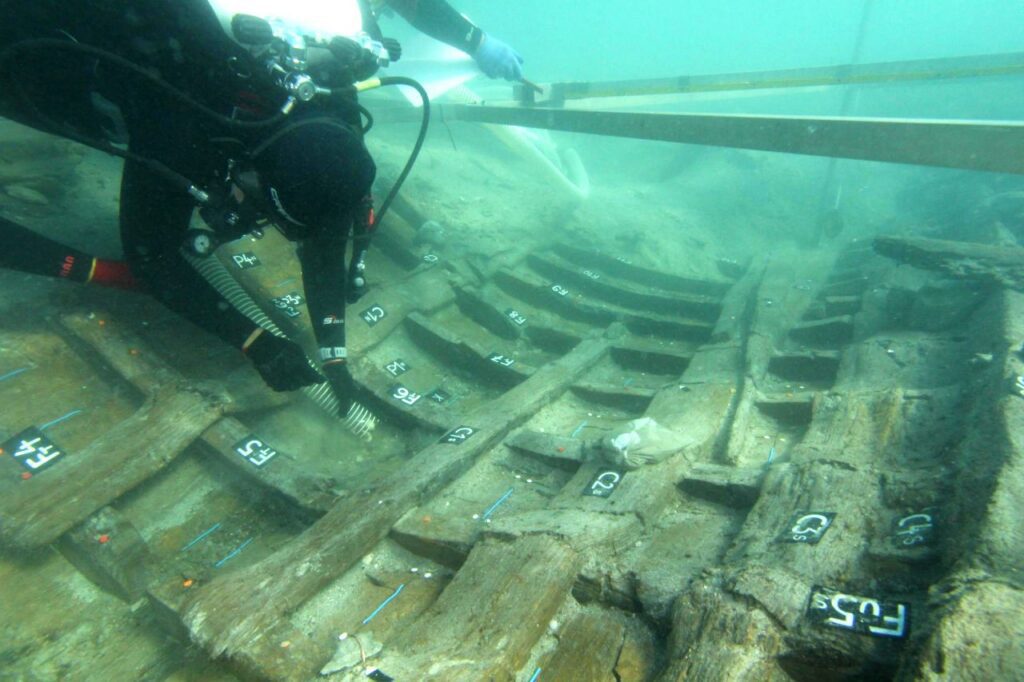
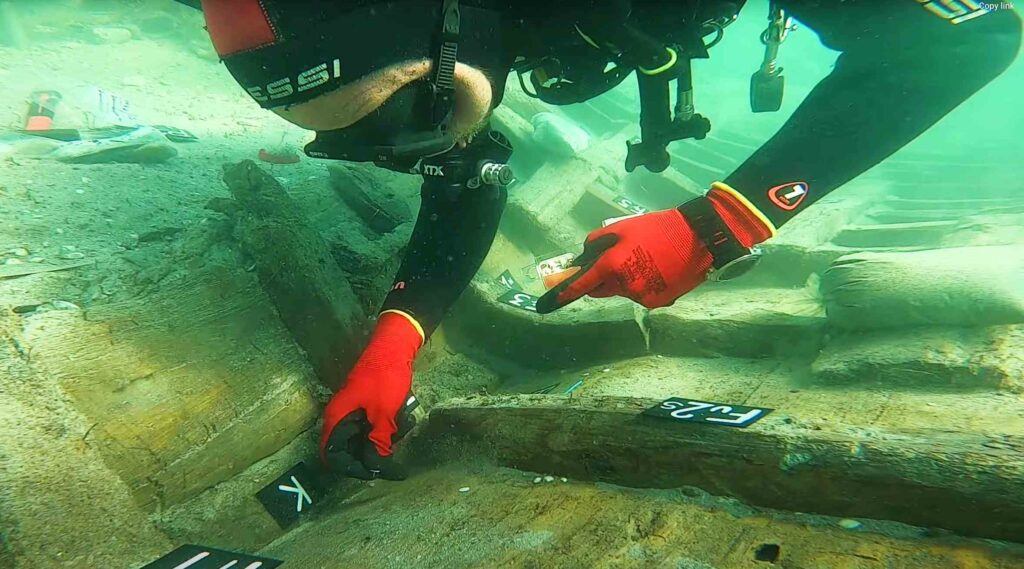
Barbir was discovered in 1973 but serious archaeological excavations were begun there only in 2017. The International Centre for Underwater Archaeology (ICUA), which is based in the nearby city of Zadar, has been researching the site in collaboration with the German Archaeological Institute (GAI), the universities of Oxford and Zadar and Croatia’s Archaeological Museum in Zagreb.
Also read: Divers uncover Stone Age road in Croatia
The port was developed in two phases, the first dating from the 1st century AD. Numerous finds of ceramic vessels and amphoras, oil lamps and fragments of glass originating in present-day Greece, Turkey, the Middle East and Italy have been found, indicating that Barbir was a significant trading post.
Major expansion in the mid-4th century showed evidence of even more intensive trade, including with North Africa. After the divers found 30 Roman bronze coins buried 1.5m below seabed level they went on to uncover a piece of timber containing a metal nail.
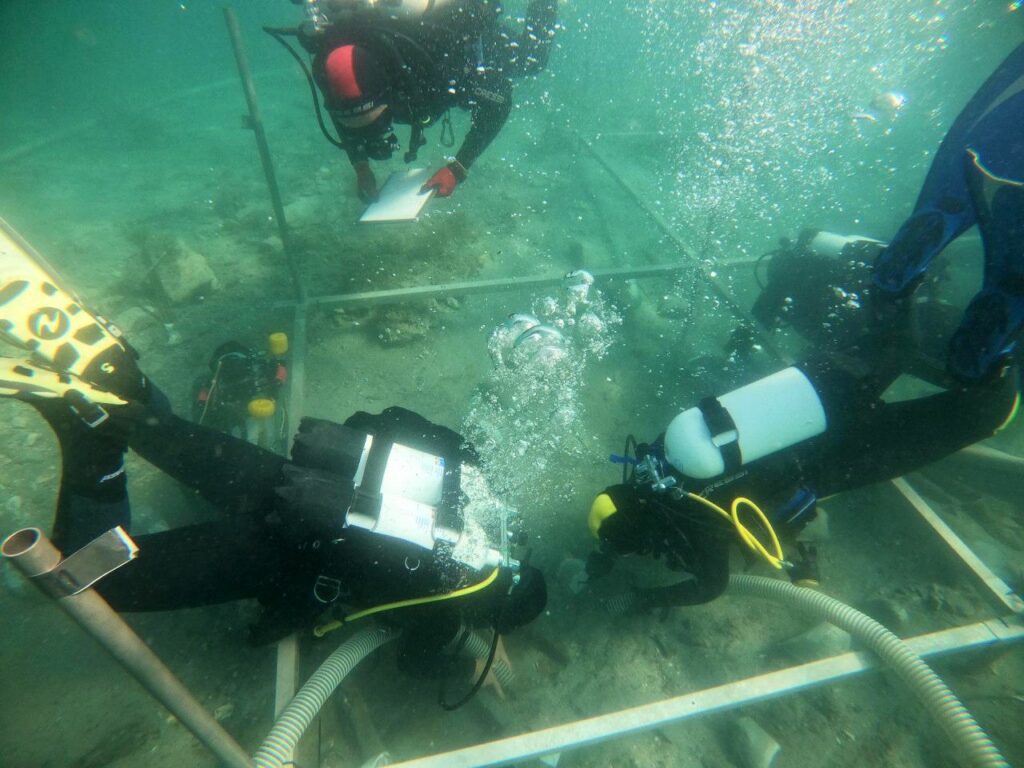
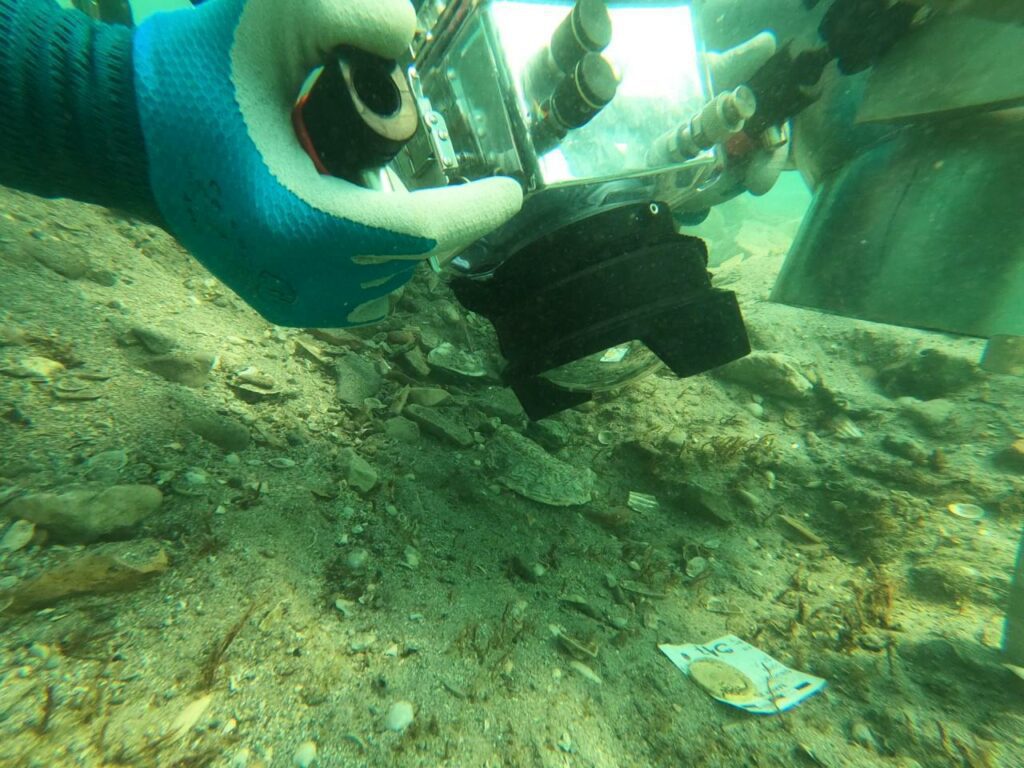
“We were hoping that there could be a boat next to that board,” said ICUA director Mladen Pesic, and the following year the Roman ship started to be revealed. “We dated it to the end of the 1st or the very beginning of the 2nd century, corresponding to the first phase of the port.”
The coins dated from several centuries later than the ship, from the reigns of Constantine II, Constantius II and Constans I. The three sons of the Emperor Constantine the Great, when their father died in 337 AD they divided up and later fought over the Roman empire among themselves.
An earlier bronze coin (shown in the pictures above) was found on the shipwreck site and dates from the period of the emperor Trajan (998-117 AD). Other artefacts found on the ship were pottery, as yet undated, and because there was no cargo this would probably have been used by the crew.
The wreck’s shallow depth has allowed the small team of divers from the ICUA and GAI to stay submerged for 90-120 minutes at a time to work at the site. “So far we have managed to reach half of the ship, with each element marked and photographed,” Pesic told local news outlet Zadarski.
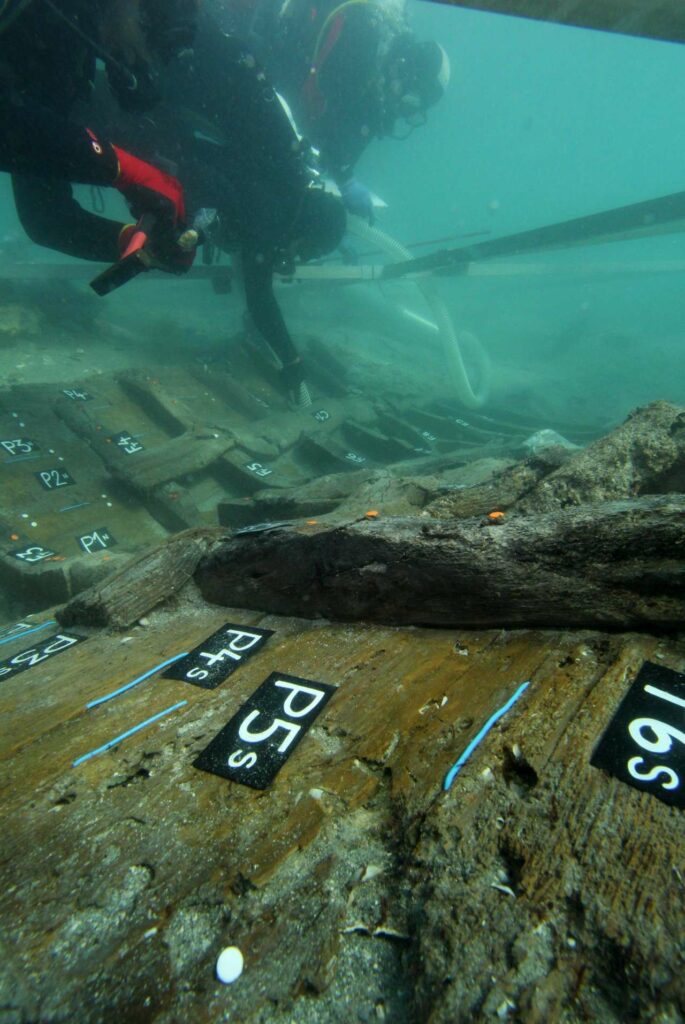
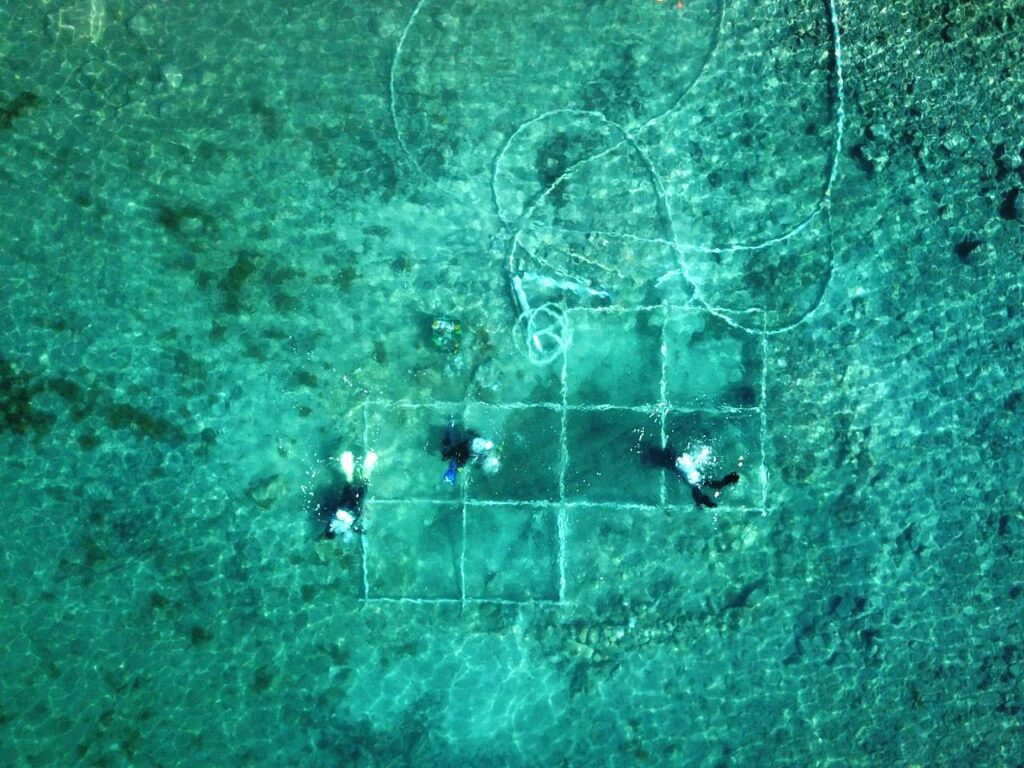
“Unlike most ancient ships that sink and end up deformed at the bottom of the sea, this one has managed to keep its shape,” he said. “We have sent timber samples to France for analysis, and by determining the origin of the material will determine whether the ship was built locally or in other regions.”
Work to excavate the remainder of the ship will continue next year. “Until then, the site will be protected by layers of sand and stone, which have so far been shown to provide very good protection,” said Pesic. “We would very much like to raise the ship and one day display it.” If that happens, it will be the first Roman ship found in Croatian seas ever to have been raised.
Also on Divernet: Divers Finds Ancient Roman Tile Wreck, Spanish Divers Uncover Roman Gold Coins, 300 Amphoras Found – Contents, Labels And All!, Sealed Pots Found On Roman Wreck
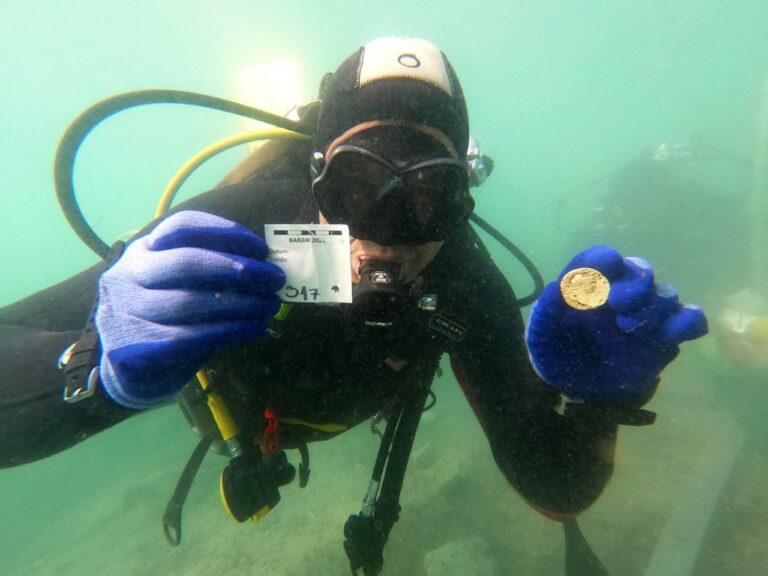

Brilliant, I used to dive in the far east many years ago, found a few sunken dows with things still on them. Mostly ruined by sea water, but still exciting to find them